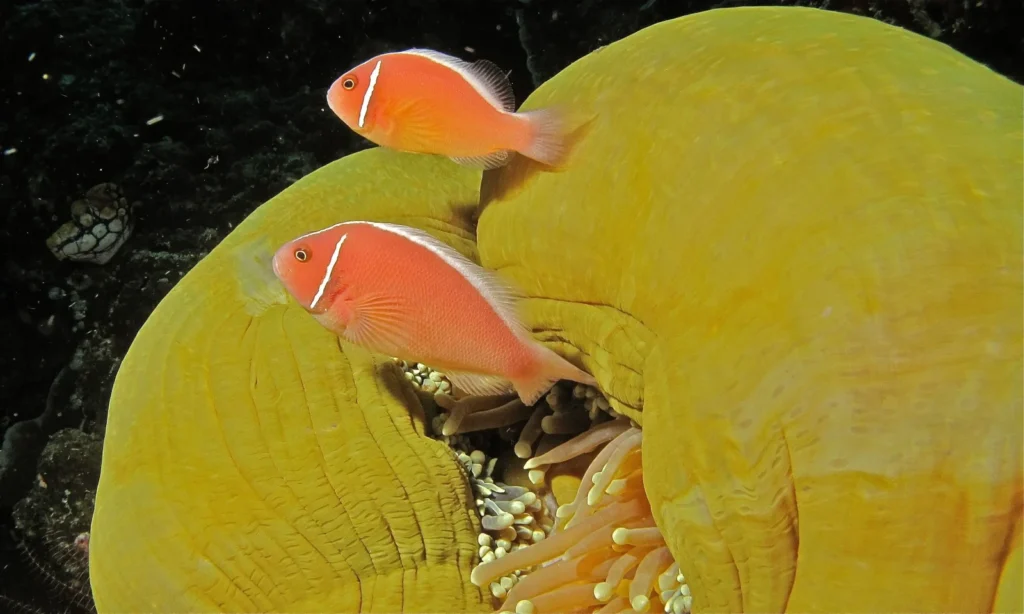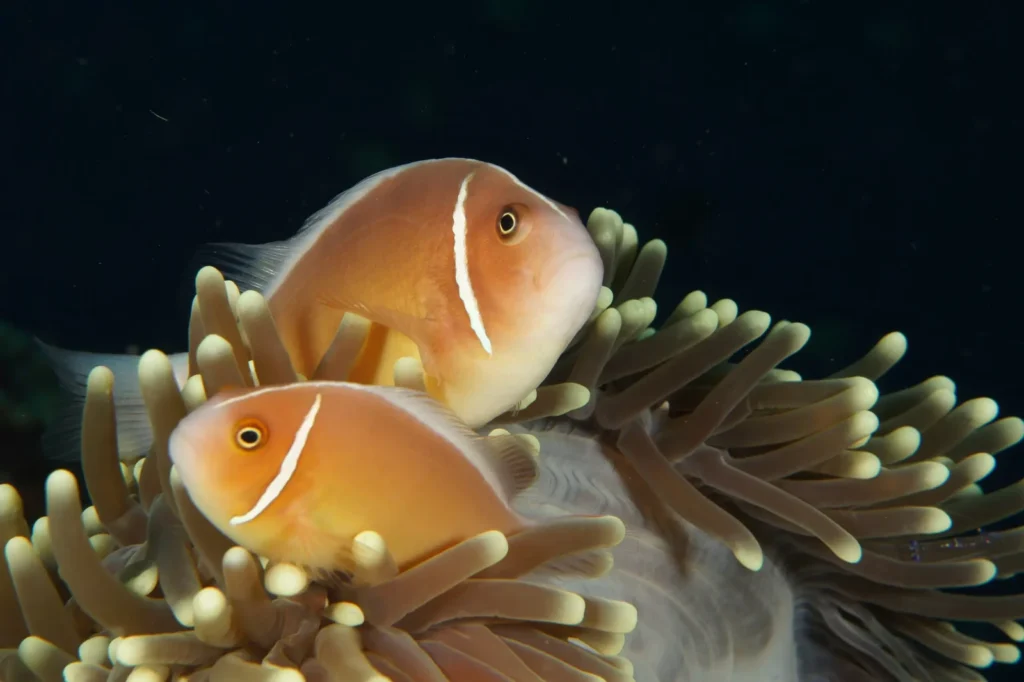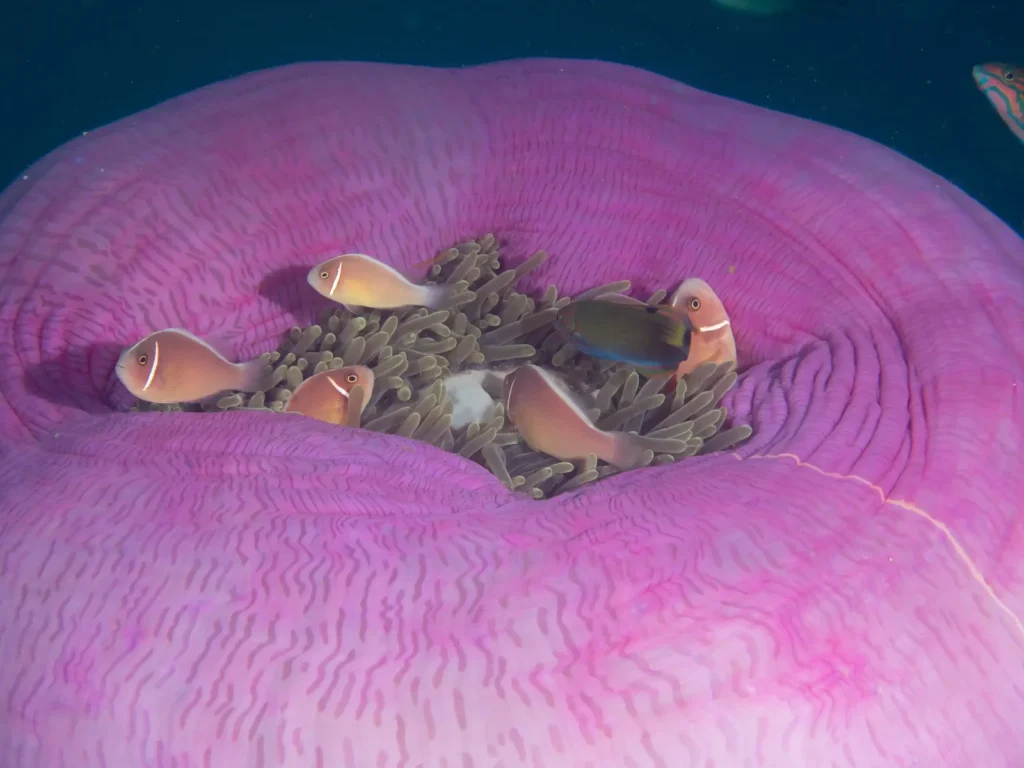Among the clownfish, there are some species that attract attention not with bright contrasts, but with a different color scheme. exquisite simplicity and delicate colors. Amphiprion perideraion, or pink clown, stands out soft pink shades elegant white ornament. This is one of the most graceful fish of the pomacentrovy family (Pomacentridae), which lives among the coral reefs of the Pacific and Indian Oceans.
✔ Delicate pink color and a white line along the body
✔ Less aggressive than other clowns
✔ It lives in symbiosis with several anemone species
✔ It is popular among aquarists because of its calm nature.
Let's take a closer look at this charming tropical reef dweller.

Scientific classification
✔ The Kingdom: Animals (Animalia)
✔ Type: Chordal (Chordata)
✔ Class: Lucheperi pisces (Actinopterygii)
✔ Row: Perch-like (Perciformes)
✔ Family: Pomacentrovye (Pomacentridae)
✔ Gender: Amphiprion
✔ View: Amphiprion perideraion (Bleeker, 1855)
📌 Interesting!
Title perideraion it comes from the Greek language and means "wearing a belt”, indicating a distinctive white stripe along the fish's back.
Appearance
🔹 Body shape:
✔ Elongated, slightly flattened at the sides
✔ Compact and slim, designed for fast swimming
🔹 Color scheme:
✔ Soft pink body
✔ White vertical stripe behind the eyes
✔ A thin white line running along the back to the tail
✔ Translucent yellowish fins
🔹 Sizes:
✔ Average length: 6-9 cm
✔ Maximum length: up to 11 cm
📌 Interesting!
This species looks less contrasting than the classic orange clowns, but its delicate coloring is in harmony with the colors of coral reefs.
Range and habitat
🌍 Where does the pink clown live?
✅ Western Pacific
, Indian Ocean
Great Barrier Reef, Indonesia, Philippines, Thailand
🔹 Living environment:
✔ Tropical coral reefs on the at depths of 2-25 meters
✔ Often found among sandy lagoons with lots of anemones
📌 Interesting!
This species rarely lives in open parts of the reef-it chooses quieter places where it is easier to hide from predators.
Symbiosis with sea anemones
🔹 How does symbiosis work?
✔ Protects the anemone from predators
✔ Uses her tentacles as a shelter
✔ Brings her food and cleanses her of any leftovers
🔹 What kind of anemones does it co-exist with?
✔ Heteractis magnifica (majestic anemone)
✔ Stichodactyla gigantea (giant anemone)
✔ Macrodactyla doreensis (long-fingered anemone)
📌 Interesting!
Clownfish gradually get used to the anemone, becoming immune to its stinging cells.

Lifestyle and behavior
🔹 Social structure:
✔ Lives in small groups (dominant female, male and juveniles)
✔ The largest individual in the group – female, the rest are males
🔹 Defensive behavior:
✔ Less aggressive than Amphiprion ocellaris or A. clarkii
✔ When threatened, it hides in the tentacles of an anemone
🔹 Life span:
✔ In the wild: 6-10 years old
✔ In captivity: up to 12 years old
📌 Interesting!
If the dominant female dies, the largest male changes sex and takes its place.
Nutrition and environmental role
🥗 What does the pink clown eat?
✅ Small zooplankton
✅ Crustaceans
, Seaweed
🔹 Environmental role:
✔ Cleanses the anemone from food residues
✔ Controls the abundance of small marine organisms
📌 Interesting!
These fish not only protect the anemone, but also help them stay healthy.
Reproduction and development
🔹 Method of reproduction:
✔ Female lays eggs 100-500 eggs
✔ The male takes care of the clutch, cleans the eggs
🔹 Development:
✔ Larvae swim in the water column up to 2 weeks
✔ Juveniles settle among anemones after metamorphosis
📌 Interesting!
Larvae are born colorless, and their characteristic pink color appears only after settling on the reef.

Pink clown and man
🔹 Popularity in aquariums:
Популярен Popular with aquarists
Спокой Calm, adapts easily to the artificial environment
🔹 Industrial value:
✅ Grown in nurseries for sale
📌 Interesting!
Due to its lower aggressiveness, this species is recommended for sharing with other peaceful fish.
Species conservation and environmental threats
🔹 Population status:
, The species is not under threat
🔹 Main threats:
Ruinuvannya coral reef destruction
Zabrudnennya ocean pollution
🔹 Security measures:
✔ Marine reserves
✔ Controlled catch
📌 Interesting!
The loss of anemones due to climate change can affect the population of these fish.
Conclusion
🐠 Amphiprion perideraion is a gentle and sophisticated reef dweller that fascinates with its color and peaceful disposition.
💡 Would you like to see this unusual clown in the wild? 🌊✨